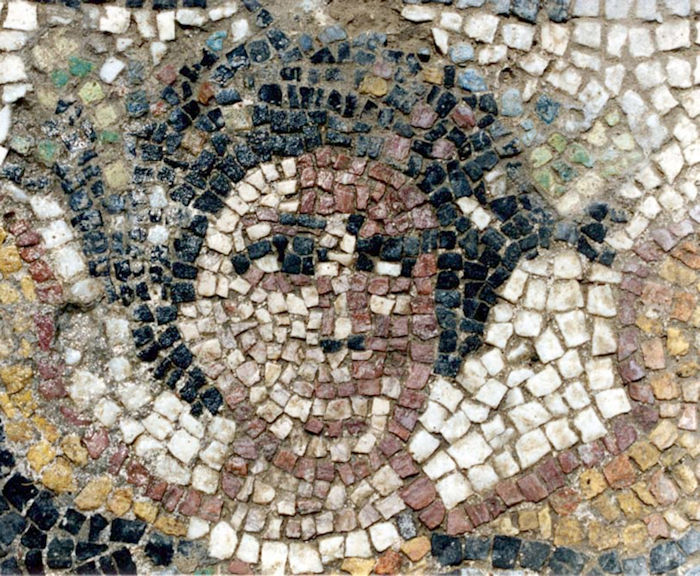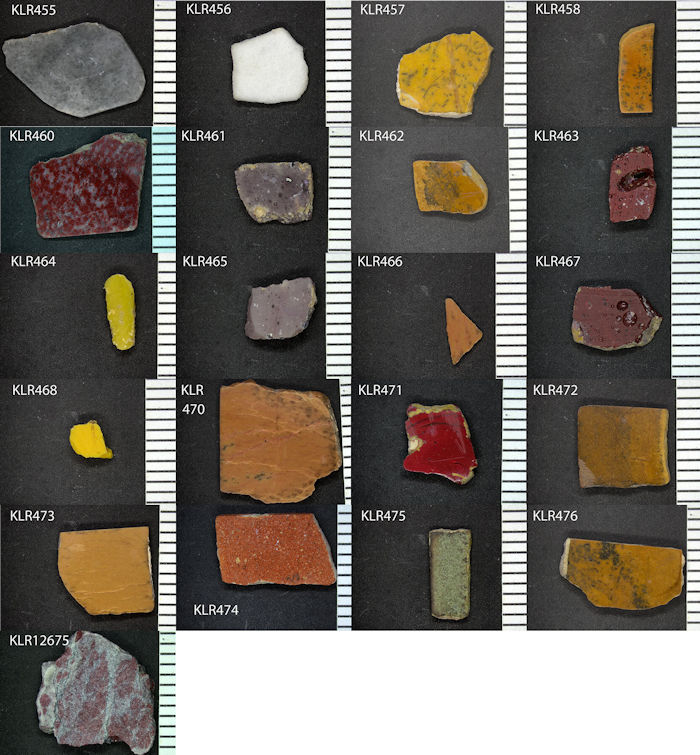Jan Bartek – AncientPages.com – Although this 1700 years old luxury villa was excavated and examined both in 1856 and in the 1990s, it still has secrets to reveal.
New secrets have now been revealed by an international research team, with Professor and expert in archaeometry, Kaare Lund Rasmussen from University of Southern Denmark leading the so called archaeometric analyses: using chemical analysis to determine which elements an object was made of, how it has been processed, etc.

Detail of mosaic floor. Credit: Kaare Lund Rasmussen/University of Southern Denmark.
Others in the team are Thomas Delbey from Cranfield University in England and the classical archaeologists Birte Poulsen and Poul Pedersen from Aarhus University and University of Southern Denmark. The team’s work is published in the journal Heritage Science, including archaeometric analysis of 19, approximately, 1600 years old mosaic tesserae.
One of seven wonders of the world
The tesserae originate from an excavation of a villa from late antiquity, located in Halikarnᴀssos (today Bodrum in Anatolia, Turkey). Halikarnᴀssos was famous for King Mausolus’ giant and lavish tomb, which was considered one of the seven wonders of the world.

Selection of the mosaic tesserae, investigated by professor Kaare Lund Rasmussen/ University of Southern Denmark. Credit: Kaare Lund Rasmussen/University of Southern Denmark
The villa was laid out around two courtyards and the many rooms were adorned with mosaic floors. In addition to geometric patterns, there were also motifs of various mythological figures and scenes taken from Greek mythology; e.g. Princess Europa being abducted by the god Zeus in the form of a bull and Aphrodite at sea in her seashell.
Motifs from the stories of the much younger Roman author Virgil are also represented.
Inscriptions in the floor have revealed that the owner was named Charidemos and that the villa was built in the mid-fifth century.
A costly luxury
Mosaic flooring was a costly luxury: expensive raw materials like white, green, black, and other colors of marble had to be transported from distant quarries. Other stone materials, ceramics and glᴀsses also had to be imported.
“I received 19 mosaic tesserae for analysis in my lab in Denmark. Of these, seven were of glᴀss in different colors; purple, yellow, red, and deep red. My conclusion is that six of them are probably made of recycled glᴀss,” says Kaare Lund Rasmussen.
This conclusion is based on a chemical analysis called inductively coupled plasma mᴀss spectrometry. With it, the research team has determined the concentrations of no less than 27 elements, some of them all the way down to a concentration of billionths of a gram.

Excavation and mosaic floors of villa. Credit: University of Southern Denmark
Waning of Roman Empire—We were able to distinguish between base glᴀss from Egypt and base glᴀss from the Middle East and also, we could determine which elements were added by the ancient craftsmen to color the glᴀsses and to make them opaque, which was preferred at the time, he says.
See also: More Archaeology News
It is of course difficult to extrapolate from only seven glᴀss mosaic tesserae, but the new results fit very well with the picture of Anatolia in late antiquity. As the power of the Roman Empire waned, trade routes were closed or rerouted, which probably led to a shortage of goods in many places—including raw materials for glᴀss production in Anatolia.
This, together with the stories depicted on the floors, allows the classical archaeologists to put together a more detailed picture of what was fashionable in late antiquity and what the possibilities were for the artistic unfolding.
The study was published in the journal Heritage Science
Written by Jan Bartek – AncientPages.com Staff Writer





